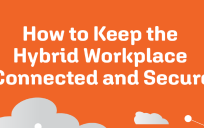The point of this post: participatory websites are leading to participatory organizations, which provide opportunities for a few core people to leverage the effort of a much broader community and accomplish substantial achievements.
The emerging web
I’ve been using the web since the beginning and building websites since 1993 or 1994. Back then, building a website was pretty straightforward: you wrote content, marked it up in HTML and put it on a web server. People would come and read it. If it was good and people liked it, they might link to it and more people might find it and read it. But the content on the site was provided by the site owner.
A few years ago, I started to see a very different type of website. A very successful type of website. One of the key differences was that the content on the site wasn’t provided by the site owner, but by the site users. It was a participatory type of site. Maybe you’ve seen some sites like that.
Wikipedia
Facebook
Flickr
YouTube
eBay
Craigslist
Twitter
All of these sites have some things in common. They are collaborative partnerships between owners and users:
On the one hand, the sites’ users:
- provide pretty much all of the content;
- also provide much (if not all) of the grunt work in evaluating the content through rating, “liking”, editing, tagging, etc.
On the other hand, the sites’ owners
- make it clear what type of content they are looking for.
- provide a structure to hold, organize and deliver the content.
- provide tools to facilitate the uploading and management of the site’s content.
The Mozilla Foundation
I wasn’t the only one noticing these trends. A lot of people were. There was a lot of hype around the so-called “Web 2.0”. So much so that the City of Toronto organized a “Web 2.0” Summit. At that summit, Mark Surman, Executive Director of the Mozilla Foundation, gave an excellent and inspirational talk which he called “a city that thinks like the web” and talked about the Mozilla modus operandi that took them from almost no market share to over 200 million users, 20% global market share against one of the biggest companies on the planet. And the way they got there reminded me a lot of those “Web 2.0” sites I was just talking about.
But before I go there, let me go back to the model I just gave you of how the labour was distributed: owners and users. And if you actually look at many of the sites, it’s not quite that simple. Not all users are equal. In fact, it’s a truism that most of these sites follow the 90/9/1 rule. 90% of users just visit and consume without contributing.
So in fact, there are three types:
- Site owners (who provide the structure) and their paid or core teams. Very small in number compared to the other two types.
- Contributors (who provide the content). A lot bigger group than the core team, but dwarfed in size by the…
- Lurkers (who just use the content) and are about 90% of the users.
With that in mind, let’s go back to Mozilla and look at how Mark described its organization a few years ago:
60 paid employees on the dev team
1000s of contributors (volunteer)
500,000+ beta testers (volunteer)
200 million users (lurkers)
Same basic concept. A small core of a central team that provides structure and coordination for the voluntary contributions of a much larger community of participants who create something of great value for a much larger public.
Remember, this was 2008 or so. At the same time, we were seeing a similar dynamic in the political field with significant offline results. I’m referring, of course, to the Obama campaign.
The Obama campaign
Whatever your opinion of Obama’s personal character, policies or actions in office, he certainly led a successful campaign.
- The Obama campaign raised $639 million (as compared to the $360 million raised by the McCain campaign), much of it in the form of small donations.
- It dominated online: about 5x the number of friends on social networking sites Facebook and MySpace, 9x as many views of the YouTube videos they uploaded and over 28x as many Twitter followers, for example.
- There were 35,000 volunteer groups and 200,000 offline events. In the four days before the election volunteers made 3 million calls. In the weekend before the election volunteers knocked on 1 million doors in Pennsylvania alone!
Once again we have a similar dynamic:
- a core team of paid employees making it clear what they are looking for (setting the messages, platform, etc.)
- a much larger group of volunteer contributors (35,000 volunteer groups likely means a lot more contributors)
- an even bigger group of lurkers (the millions who voted for Obama on election day).
The Mozilla and Obama examples share some other characteristics beyond the 90/9/1 dynamic. Here are three:
- Clear and consistent expression of a common vision that inspires and attracts a large community of participants.
- For Mozilla that vision is of an open web, enabled by a community-produced open source alternative.
- For Obama the vision was: Hope. Change. Action.
- Volunteers are provided with direction, training or learning opportunities and tools.
- Mozilla provides extensive online documentation supporting developers, with a clear delineation of the various roles and responsibilities. They provide a toolset (for example “Bugzilla”, the tool the developed for tracking bugs). They also provide mentorship to new developers.
- The Obama campaign also provided training to volunteers, with increasing training opportunities as their involvement grew. Sophisticated tools were provided through the MyBarackObama.com social networking site. Other innovative tools were also provided, such as the iPhone application, which acted like a portable campaign office.
- Volunteers are empowered to act creatively, as long as it is consistent with the overall vision.
- Mozilla makes its source code freely available to volunteers and invites them to work with it. On the marketing side, they encourage the participation of volunteers as well. When Firefox 1.0 launched, there was a 2 page ad spread in the Sunday New York Times, a product of volunteer contributions.
- For the Obama campaign, many of the most effective promotional materials: posters, viral videos, even carved pumpkins, were created by supporters who had no connection whatsoever with the campaign organization.
But what does all this have to do with the stuff that government does? Let me give you one more example from 2008. It takes place in the small Baltic country of Estonia and concerns that most mundane activity, picking up garbage.
Teeme ära (Let’s Do It)
In Estonia there was a problem with illegal dumping. A lot of countries have that problem. But a few dedicated people in Estonia decided they wanted to do something about it. And they used many of these principles to do so.
Tools were created to allow volunteers to easily submit locations of illegal dumping sites (taking pictures with their cell phones and sending them in). The system would read the GPS coordinates from the photos and plot them on a map based on Google Earth. Over 700 volunteers plotted over 10,000 illegal dumping sites.
Based on the map of illegal sites, they launched a campaign to get volunteers for a one-day, country-wide clean-up. 50,000 Estonians volunteered to help. On May 3, 2008 they set to work and cleaned up and recycled or properly disposed of over 10,000 tons of illegal dumped garbage. Some estimated it would have taken the government over 22 million Euros and more than 3 years to do the same thing.
And they did this using the same principles:
- A small core group set the vision and provided direction and tools to a much larger group of volunteers who created value for an even larger group (the country as a whole).
- They empowered everyone to get out and spread the word.
That wasn’t a government action, but it could have been. It was a collective action to solve a public problem. That’s what governments are about.
Public sector application
Could we use similar methods in government? A lot of people have been thinking so. It’s that kind of thinking that sparked ChangeCamp and GovCamps in Toronto and a number of similar gatherings for “Gov 2.0” or “Open Government” around the world.
A lot of governments are very interested in exploring this area. In these tight fiscal times, the idea of accomplishing a lot more while paying for a lot less looks very attractive. And people want to participate. They are pushing governments to be more “open” to their contributions.
But governments are also very risk averse. And they see a lot of risk here. The more that is done by outsiders, the more they see themselves as giving up control. That’s scary – especially when they are not giving up accountability.
In addition to those concerns, I think politicians and civil servants have real concerns about their roles, if this “open” model is widely adopted in government.
I think the push towards more direct participation from the public in setting priorities and policy direction is a real threat to our elected representatives. That’s their job. Joe Q. Public on the street has no mandate to tell civil servants what to do or what “the people” want. In a representative democracy, elected representatives have been elected to do just that.
And many civil servants worry that the government may see “crowdsourcing” as a way to take their work and pass it over to volunteers, saving a lot of money and putting them out of a job.
I think that this model addresses both of those concerns.
For the politicians, the model I’ve been describing does not crowdsource the vision setting and direction providing. You’ve got the people in the centre who are asking for help and are very clear about what kind of help they want. So (and I’m going to step a bit into heresy with my example here), don’t throw open all of our data and say “make of it what you will”. Instead, following our model, government leaders should provide more direction and a vision. They should provide a call to action. It is far better to make data available saying “Use this to help us promote our province (or state or country)!”, “Use this to help encourage investment and industry!”, “Use this to help us improve our service delivery and to design innovative new services!” or “Use this to help us increase citizen engagement and improve our democracy!”
If the vision or goals are made clear and the initial responses are in line with them, it will be much easier for leadership to be confident that the community shares their vision and goals and is “on side”. (Fear of a “gotcha” response is a primary political impediment to risk-taking). This technique was followed by the Obama campaign. It was very clear on what the vision was. All of its material was tied to the three themes: Hope. Change. Action. The message was so clear and consistent that it was effectively picked up and communicated by the vast community of volunteers in the development of their home-grown marketing efforts, graphics, posters, videos, etc.
For the civil servants, this model has a role for them, too. All of the successful examples we’ve seen have a central, dedicated (often paid and full-time) team: building the tools to help participants and coordinating their activities. That’s a role civil servants can play. And, while 50,000 Estonians were ready to contribute a day to clean up illegal dumping, I’m not sure if they would be ready to dedicate time every week for regular garbage pickup. Especially if they were also tasked with helping deliver all of the other government services as well.
I may be wrong about that. With “Peer to Patent” we’ve seen people ready to step up and provide significant help in the regular government service of patent review. And with websites like “Fix My Street” we see people ready to help out in the inspection business. I wonder if tools and training were provided, would people be willing to pitch in and help deal with the problems they report?
But I don’t think our jobs will be lost this way soon. The US Patent Office is augmenting with volunteers, not replacing.
I suspect that this model is better at dealing with the big problems – the “Clean the country” rather than the regular garbage pickup. And governments are facing huge public problems now: climate change, demographic shifts, access to health care, poverty, sustainable energy needs, human rights concerns … the list goes on. These seem way too big for any of our governments to fix. Bringing in volunteers to fix these problems won’t take our jobs. But it may help get the problems solved.
What I haven’t addressed are the concerns about control and accountability.
This concept of providing the overall direction/vision/tools and letting people make it happen in any way that works sounds a lot like “leadership” (contrasting with “management”) as described in the leadership literature for a long time now. Our leaders (the politicians and senior executives) may be ready for this but most government organizations are not. They tend to be bureaucracies and very process-oriented. They are control-driven, to ensure consistency and accountability.
We need to trade some consistency for innovation; some accountability for opportunity. We need to keep some consistency and definitely accountability with the paid staff while opening up to the loss of consistency and accountability in the volunteers. We need to embrace that which moves the vision forward; while letting that which doesn’t die on the vine.
These aren’t the be all and end all of my thoughts on the matter. This is the result of some musing in off moments. I’m sharing these draft, half-baked ideas and looking for contributions and creative re-mixing from the community. What do you think?




Leave a Reply
You must be logged in to post a comment.